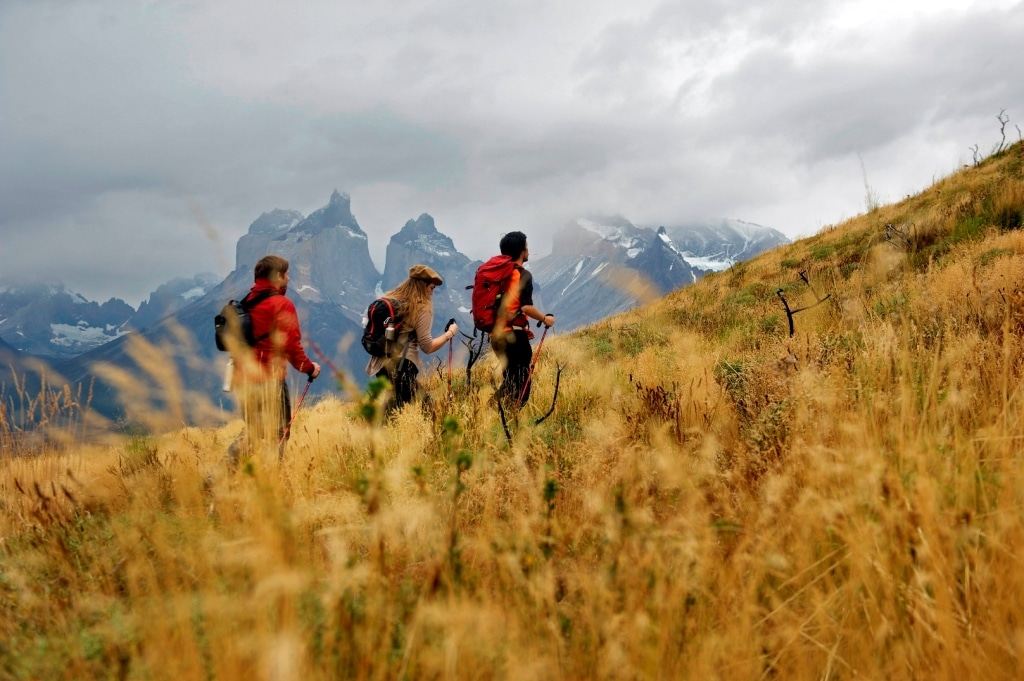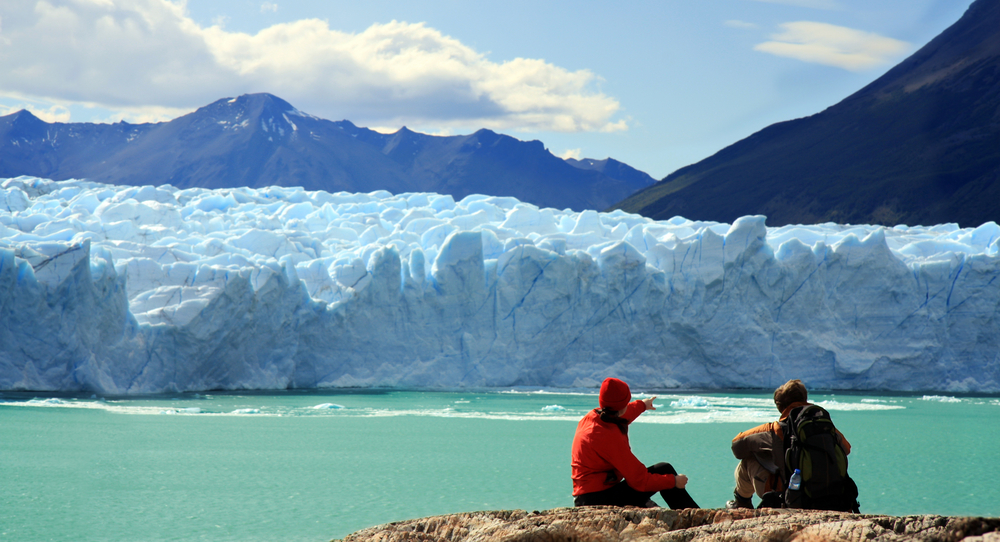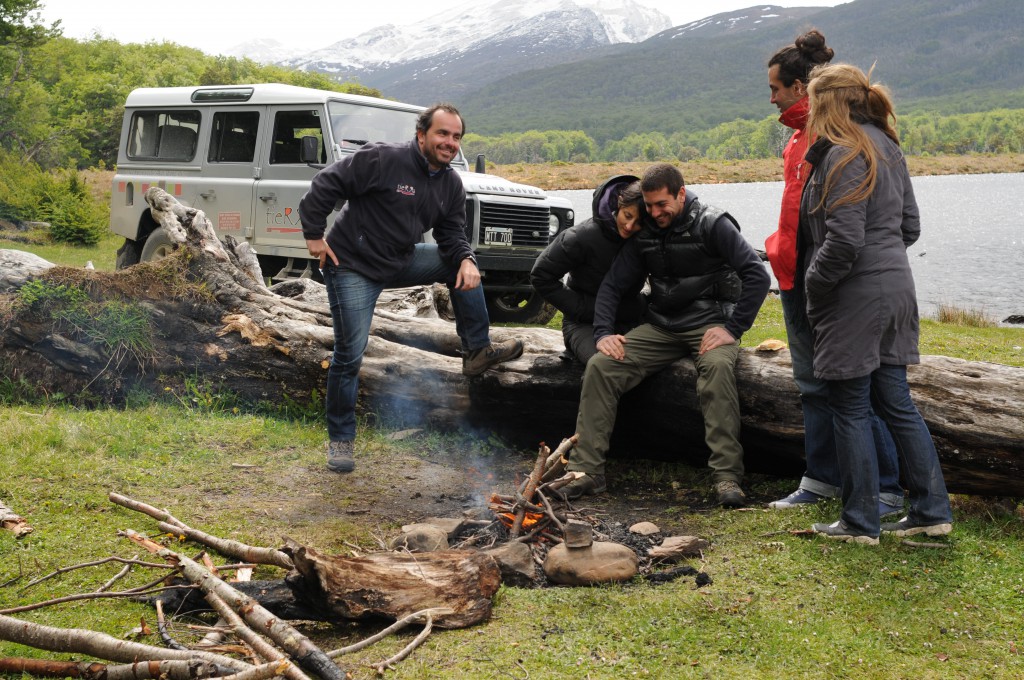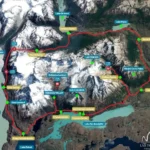
How to Pack Lightly for your Hiking Adventures
Argentina has much to offer to enthusiastic hikers. You can enjoy trekking tours from south to north; At the End of The World, Ushuaia, or the inspiring glaciers like Perito Moreno in Patagonia; you can also hike around El Aconcagua area or up north in the ancient historic sites like Pucará de Tilcara.
However, when you’re trekking across a rugged landscape, you’ll feel more comfortable with a lighter backpack. So, how can you pack lightly for your Argentinian hiking adventures? This is our suggestion, which you should adapt to your convenience:
Compile 5 lists
The first step in packing is to decide what you must take and what you may leave behind. The best way to do this is to brainstorm and make a series of lists of what you might need. I make 5 separate lists to better organize my thoughts.
1. Clothing
One of the problems of hiking in Patagonia is that the weather can be very unpredictable, meaning that you must be prepared for anything. In the south, the strong winds that blow from the Patagonian Ice Field and Antarctica mean you may experience all 4 seasons within one day! In the north, the weather is much warmer, sometimes exceeding 860F in summer.
If you are joining a guided hike we will inform you of the weather conditions you may experience so you can better plan what to pack. For many winter treks, you’ll require hiking boots or shoes, thermal underwear, fleece, softshell jacket, parka, trekking pants, over pants, thermal socks, gloves, and a wooly hat. During summer, a sun hat and shades will be necessary.
When you set off on your hiking adventures, you may already be wearing all the clothes you need and so you won’t need to pack any. However, if your hike involves significant changes in altitude, you’ll need to add or subtract layers along the route.
2. Equipment
A 50l trekking backpack should prove adequate for most hiking adventures. Most of our private trekking tours include some of the heavier camping items, such as sleeping bags and tents. Remember to check your equipment before packing. If it doesn’t work, or you don’t know how to use it, it will be useless.
You’ll want to pack your camera and maybe binoculars for some of the spectacular wildlife you’ll see. A nightlight would be useful and trekking poles are recommended if you’re used to them. In summer, bug spray may prove invaluable. If you feel the cold at night, a sleeping bag liner will help keep you warm.
3. Toiletries
Sunscreen will be essential in summer or for crossing the snow. Don’t forget your feminine hygiene products. Baby wipes are a good idea, especially if you’re hiking with kids. Brave parents carrying their baby along shouldn’t forget to add diapers to their list.
Every hiker must carry their own waste bag. Many hiking routes are inside National Parks is important to take out any garbage we produce, or find on our way.
4. Essential items
These are the most important items — things that you can’t just replace from a store at the trailhead or nearest town. For some people, they may be a matter of life or death. For example, if you or any member of your group suffers from allergies, an EpiPen will be essential. You may have other vital medications that you must take regularly. Also, every hiker group should have a first aid kit.
Other essential items are things like your driver’s license and your passport. You won’t be able to cross between Argentina and Chile without these. Bank cards and cash also fall within the essential category.
5. Food & drinks
First, clarify that in many places of Patagonia you can drink the water that comes from the mountains (it means that you don’t need to bring barrels of water with you. Note: always ask an expert if you can do that in the place that you will hike through). Bottled water is a good idea to keep hydrated, especially during hot summer days. Healthy snacks keep you fueled on more rigorous treks. If you’re hiking with kids, you’ll most certainly need plenty of snacks to keep them from rebelling. Before setting off, discuss food requirements with your hiking guide. Some of our tours include lunch boxes for you to take to your adventure without losing any time of your vacation.
Organize your items
After you’ve written 5 lists, check through them and prioritize. Put the most important items to the top, avoid adding anything you don’t really need (to keep your pack light), and put less important items on a reserve list to consider later.
Lay out the most important items on a flat surface. This enables you to visualize how they’re going to fit inside your backpack. Empty out your backpack so you have a blank canvas to work with.
Pack
To avoid mistakes, cross each item off your list as you pack it. Only pack the most important items. Once you’ve finished packing, you can decide if there’s room for the less important items. Remember that you’ll have to carry your backpack over a long distance and be ruthless in your decisions.
Pack in this order:
A. Heavy items
First, pack the heavy items in the bottom of your backpack. Try to spread them out so the weight is distributed to help you balance.
B. Emergency items
Anything you’ll need in an emergency, such as an EpiPen, should be packed somewhere easy to access. This might be on top of your other items or in a designated side pocket. Consider somehow labeling the pocket if confusion is likely. You could, of course, keep emergency items in your jacket pocket if they are small enough.
C. Frequently used items
There are items you may need to access frequently, such as a map or your camera. These should also be packed somewhere accessible, but you must prioritize emergency items. Some frequently used items may be carried using a special strap or holster. For example, your bug spray may be in a bottle that attaches to your belt, and your camera can probably hang around your neck on a strap.
D. Least important items
If it’s not important, why are you considering taking it? You’ll feel much better hiking if your pack is light. If you do decide to take other items, wait until everything important is packed before adding them to your backpack. You may have to rearrange your backpack when adding these to maintain balance and avoid crushing delicate items.
Need help planning your trip?
You now have a lightly packed backpack and you’re ready to trek through the amazing National Parks in Argentina and Chile. You’ll appreciate the breathtaking mountainous scenery so much more without a heavyweight on your back. Enjoy your outdoor experience in Patagonia. Contact us and let’s plan your next beautiful journey together!
Related posts & tours:
0

















